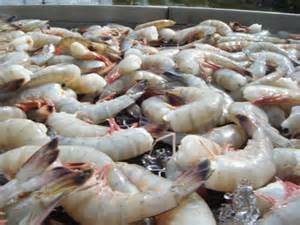
by Rick O'Connor | Sep 20, 2015
Yea, seafood… who doesn’t like seafood… actually, based on a small scale survey I conducted with marine science students over the last 28 years I have found a slight increase in the number of those who do not. Curious about this, I followed up by asking whether their concern was seafood safety or other. Almost all said they just did not like the taste. Okay… I can take that… there are something I do not like either BUT I LIKE SEAFOOD. The survey also showed that almost every year with young/old or male/female – shrimp was at the top of their favorite list. After shrimp the next 3-4 choices for males was some type of fish. For females it varied – fish, lobster, calamari, to name a few.
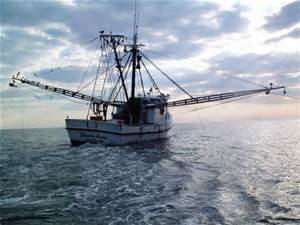
Shrimping depends on healthy estuaries.
Photo: NOAA
So what does this have to do with estuaries…
Well, you may not know this but 90% of the commercial important marine species require estuaries for at least part of their life cycles. Just as humans select a neighborhood to live and raise their kids based on safety and schools – “fish parents” find everything they want for their “kids” in an estuary. They are shallow – allowing light to reach much of the bottom where submerged plants, like seagrasses, can grow. These seagrasses provide hiding places and a place for small algae to attach – which is an important food source for many of them. There are other places for them to hide as well – emergent salt marshes and oyster reefs are biologically very productive habitats. Many of the developing larva and juveniles require lower salinities to begin and complete their life cycles; venturing to the open Gulf only when they have developed a tolerance for the higher salinities. The freshwater discharge not only lowers the salinity it also brings nutrients. These nutrients, along with the sunlight reaching much of the water column, produce an abundance of microscopic plankton – food for the young. The nutrients, thermal mixing, low salinities, and variety of habitats provide a combination for one of the most biologically diverse ecosystems on the planet – a great place to grow up… and much of it we enjoy eating.
Most of what we consume in the seafood world is divided into shellfish and finfish. Some of it is harvested and sold commercially, some we collect recreationally. In the shellfish world we are talking mollusk and crustaceans – two of the most popular seafood groups on the planet. The mollusk include snails, oysters, clams, mussels, scallops, and cephalopods like squid and octopus. Many of these species live in our estuaries their entire life cycle. Most are slow moving creatures – if they move at all – and have provided a living for some humans, recreation for many, for decades – though the landings of these species are on the decline… more on this in a later issue.
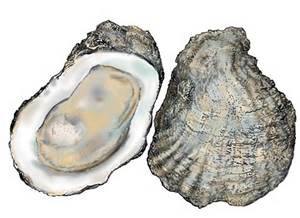
Oysters are one of the more popular shellfish along the panhandle.
Photo: FreshFromFlorida
Crustaceans include the ever popular gulf shrimp. We actually have three different species of bay shrimp we like – white, brown, and pink shrimp. There are other varieties found offshore we are now consuming, but these have been the big three. Blue crab – my personal favorite – is another popular crustacean. Though these are still harvested commercially, “crabbing” with your kids is a long time popular panhandle activity – and the day always ends well with a great meal. Crustaceans are more mobile and conduct small migrations during their life cycles. Shrimp develop within the estuary and then move offshore for breeding where the incoming tide brings the larva back to the estuary. Blue crabs migrate to the head of the bay for breeding and the females return to the lower end of the estuary for egg development and larva release – they may enter the Gulf during this process but tend to stick to the bays for the entire cycle.
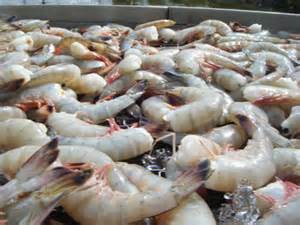
The famous Gulf Coast shrimp.
Photo: Mississippi State University
In the finfish world we are talking drum, snapper, grouper, trout, whiting, mullet, flounder, sheepshead, and many more. These species have provided both a living for the commercial fishermen and recreation for families for years. Many species breed and grow within the estuary while others make trips in and out of the bay to complete their cycles. In addition to commercial and family recreation charter fishing has increased as a business along the Gulf coast.
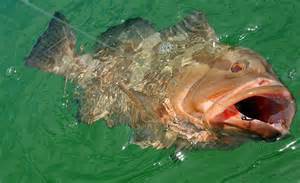
One of the more popular finfish – the grouper.
Photo: Bay County Extension, UF IFAS
We hope you and your family enjoy local seafood from our bays. There are several websites and apps, such as Seafood@Your Fingertips, that can help you locate local seafood – or you can go catch some yourselves! If harvesting recreationally be reminded that there are regulations and licenses required. You can read more about those at MyFWC.com.
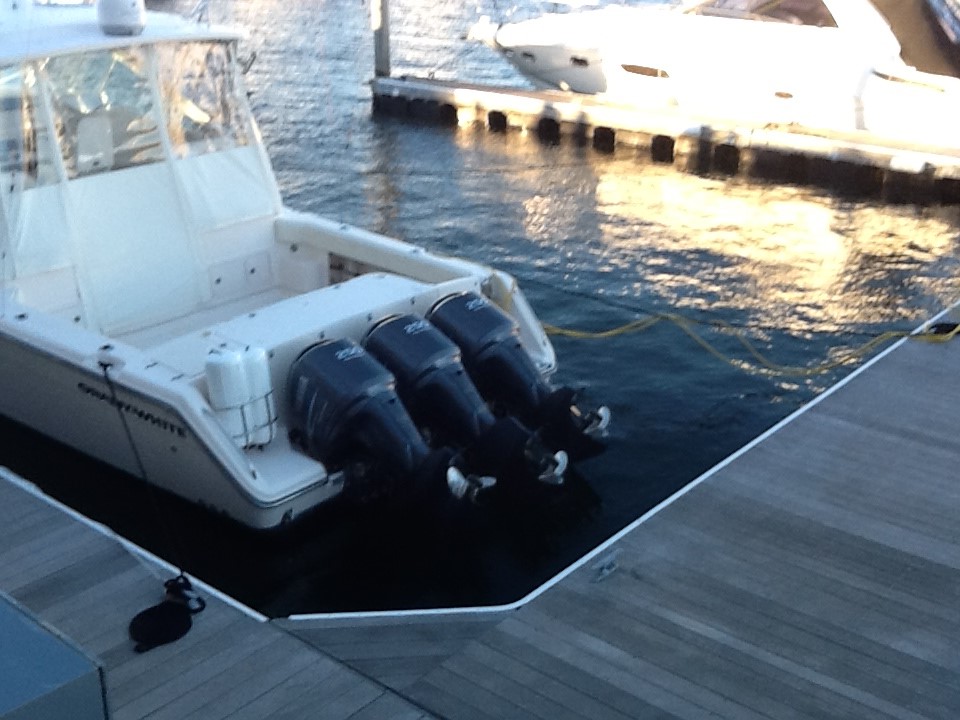
by Rick O'Connor | Aug 14, 2015
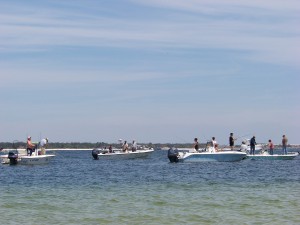
Boating is a very popular activity in the sunshine state.
Photo: Rick O’Connor
Okay… Let’s start at the beginning. We began drilling oil over 100 years ago. The crude was refined into kerosene, gasoline, plastics, and other products that have completely changed our lives. A huge international industry developed from the drilling and employed who knows how many people. But then a few problems began to emerge…
The emissions from burning oil have added compounds to our atmosphere that have contributed to human health issues and have changed the climate. As the human population grew the demand for this energy source grew, and the problems grew as well. One of the first steps made by the governments and the industry to curb the problems was the removal of lead from gasoline. At first this was problematic because many of the internal combustion engines that ran on gasoline did not run efficiently on unleaded and a back-lash occurred. Service stations offered both leaded and unleaded at the pump and motorist could choose. The car industry followed by developing engines that ran on unleaded only and eventually leaded gasoline was no longer offered. Since the phase out the blood lead level has dropped from 88% of children in the United States to 1% in 2006 (www.worstpolluted.org).
The next issue was the amount of oil. Though many text list fossil fuels as a renewable energy, it takes millions of years to renew it – so in the time frame we think of it is basically a non-renewable resource. With a finite amount of oil available the industry began looking for new sources of oil and encouraging the public to conserve their use. The government answered this by requiring the car industry to produce fuel efficient automobiles, which they have. My original truck got between 8-12 mpg, today’s trucks can get over 20 mpg. Smaller, more efficient engines that burn unleaded gasoline have certainly improved some of the problems.
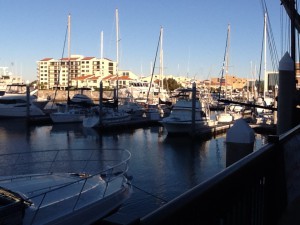
One of many marinas in Florida where boats fuel.
Photo: Rick O’Connor
However the population continues to grow. I remember just a few years ago everyone was amazed when we hit 6 billion humans, we are now at 7.2 billion and the clock moves quickly (http://www.census.gov/popclock/) . The largest growth has been in China and India. Both of these nations have experienced huge increases in their economy and quality of life. As their economic status improved their demand for energy increased and concerns about the amount oil demand increased. With the somewhat finite amount of oil, and the compounds that are still part of the emissions. Many became concerned about what would happen with growth in that part of the world. One answer to both emissions and amount was to begin searching for alternative fuels. Biofuels was one option. These fuels can be generated from plant material, which can produce ethanol. There are certainly some problems with growing corn for fuel instead of food but this is one option that the industry began to explore. Just as the original engines had problems with unleaded fuel, today’s engines have problems with ethanol. The engines that power the Indy and Formula 1 race cars do use biofuels but who can afford a Formula 1 engine? The industry’s response was to blend ethanol into the existing unleaded gasoline and offer this. The hope was that the global amount of gasoline could be conserved using this method. The original fuel was 10% ethanol and was called E-10 fuel. As expected problems occurred. Though the engine ran pretty efficiently if the fuel was used in a relatively quick period of time, and not allowed to sit within the tank and fuel lines, the ethanol began to degrade parts. Pieces of rubber and plastic blocked fuel lines causing all sorts of problems. I personally experienced this issue with my outboard motor. The outboard industry responded by developing more E-10 friendly engines and additives you can use if your fuel will be sitting in the tank for long periods of time. It is currently recommended that if you are not going to use your lawnmower or outboard over winter that you fill the tank for storage. Ethanol breaks down and water is produced. With a full tank there will be less water accumulation over time. Now comes E-15.
Yep… E-15, 15% ethanol. Though this move will eventually improve some of the problems with using oil there will be, as there have been, some growing pains. IT IS NOT RECOMMENDED THAT OUTBOARD MOTORS, LAWN CARE MOTORS, OR ANY OTHER SMALL ENGINE, use this E-15 fuel. It is currently being offered at service stations but in many cases is NOT clearly marked. All boaters, lawn care operators, and anyone else who uses small engines should check the gas pump labels carefully before fueling.








